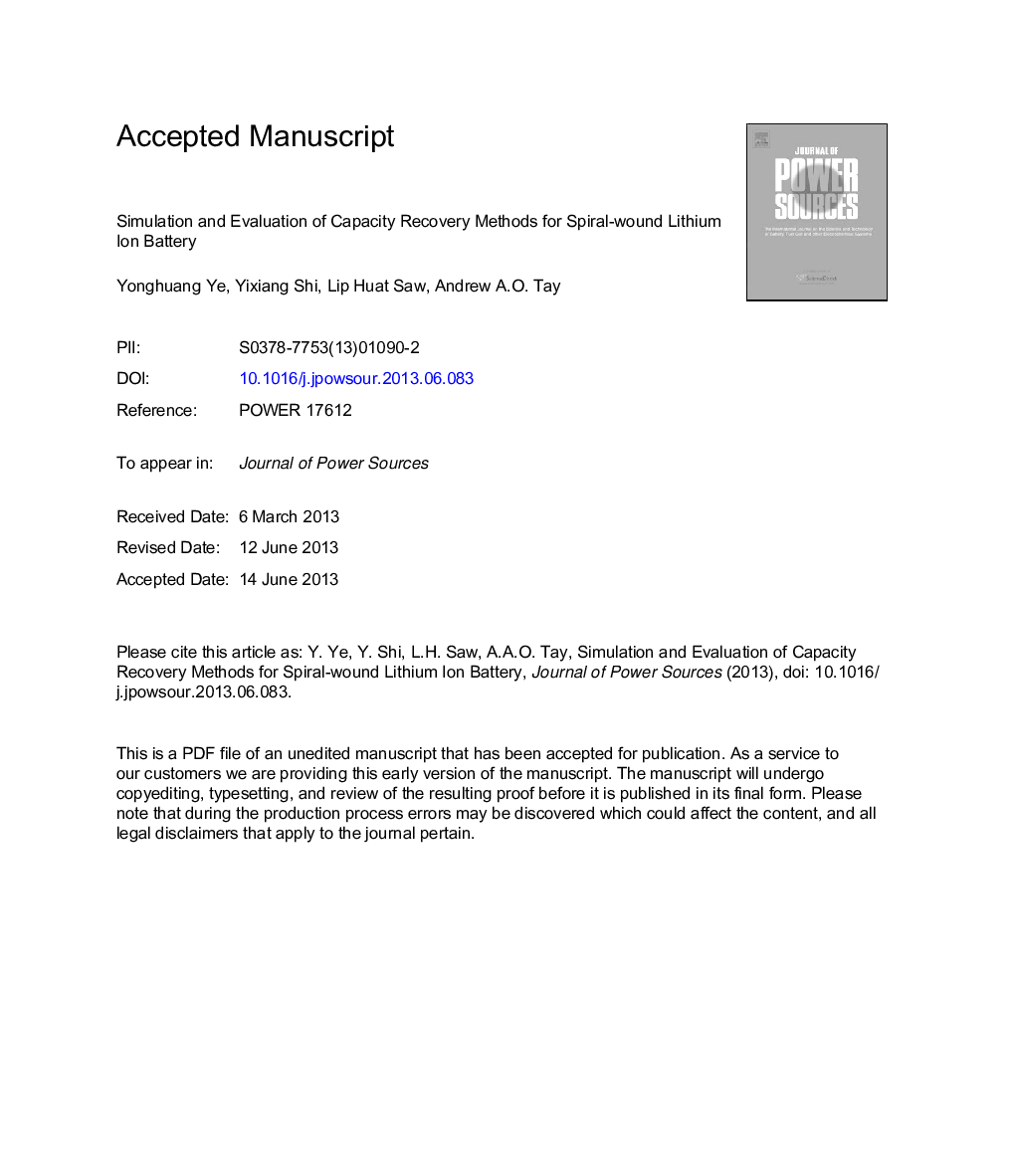| Article ID | Journal | Published Year | Pages | File Type |
|---|---|---|---|---|
| 7740806 | Journal of Power Sources | 2013 | 49 Pages |
Abstract
An electrochemical model is developed to investigate capacity recovery methods for cycled lithium ion batteries. Different capacity recovery methods are evaluated and compared. The center recovery method for commercial batteries is found to be impractical because it causes severe solid surface concentration gradients which may harm the batteries. On the contrary, the center recovery method for novel batteries with porous current collector sheets is better than the bottom recovery method because smaller solid surface concentration gradients are detected and less relaxation time is required during capacity recovery. Capacity recovery methods which discharge negative electrodes is superior to those which discharge positive electrodes of cycled batteries as smaller solid surface concentration gradients is generated and less relaxation time is required at the same discharging current.
Related Topics
Physical Sciences and Engineering
Chemistry
Electrochemistry
Authors
Yonghuang Ye, Yixiang Shi, Lip Huat Saw, Andrew A.O. Tay,
